St. Peter's Church in Leuven, a jewel of Brabant Gothic. In 12 stages
In the central Grote Markt, the central square of the city of Leuven (Leuven), in Flanders, stands the collegiate church of St. Peter (Sint-Pieterskerk), one of the greatest masterpieces of the Brabant Gothic: a monument so precious that it was declared a UNESCO World Heritage Site in 1999, within the Bell Towers of Belgium and France. Construction work on the building we can admire today began in 1426 and stopped in the sixteenth century, when the façade had not yet been completed: in fact, the original plan called for a tower façade, as is typical in these areas, but the scarce resources available to the financiers and, above all, the foundations that were not very strong (the ground was in fact not suitable to support the bulk of the planned construction) did not allow the building to be completed.
The design of the tower façade dates back to the early sixteenth century: it bore the signature of architect Joost Metsys, brother of the better-known painter Quentin Metsys, and was necessary because, in 1458, a fire had destroyed the previous tower façade from the Romanesque period. According to Metsys’s plan, the towers were to rise to a height of 170 meters, but only the bases of one of the three that were planned remain. The fire of 1458 was not the only suffering suffered by the church of St. Peter of Louvain: in 1914 a new fire, caused by the Germans who occupied Louvain during World War I, caused the roof to collapse and numerous damages to its works, and in 1944 the church was the victim of World War II bombings. The bombs almost completely destroyed the north transept, the chapter house and the sacristy, and reconstruction did not begin until 1954, to be completed in 1963: it is these works that date back to the flèche, or tall spire that surmounts the entire building.
Today, St. Peter’s Church stands as a massive building with a Latin cross plan, characterized by its unfinished facade (unfinished towers can be seen) and the mighty mass of the apse, surrounded by radial chapels connected to the main body by numerous rampant arches, typical of Brabant Gothic. High three-mullioned windows open onto each of them, while large four-mullioned windows characterize the upper register. The church has recently undergone numerous restorations: the west façade underwent intervention between 1986 and 1992, then again between 1994 and 1998 it was the turn of the choir, while between 2003 and 2011 the north transept, nave and roof underwent restoration. The latest restoration, which started in 2012, was completed in early 2020: it involved the radial chapels and the interior.
Today, therefore, St. Peter’s Church looks totally renovated, ready to welcome its visitors with a new guide available in multiple formats that presents the treasures of its interior in twelve stages, dedicated to the twelve most interesting elements that can be found inside. In this article, we take a look at them one by one.
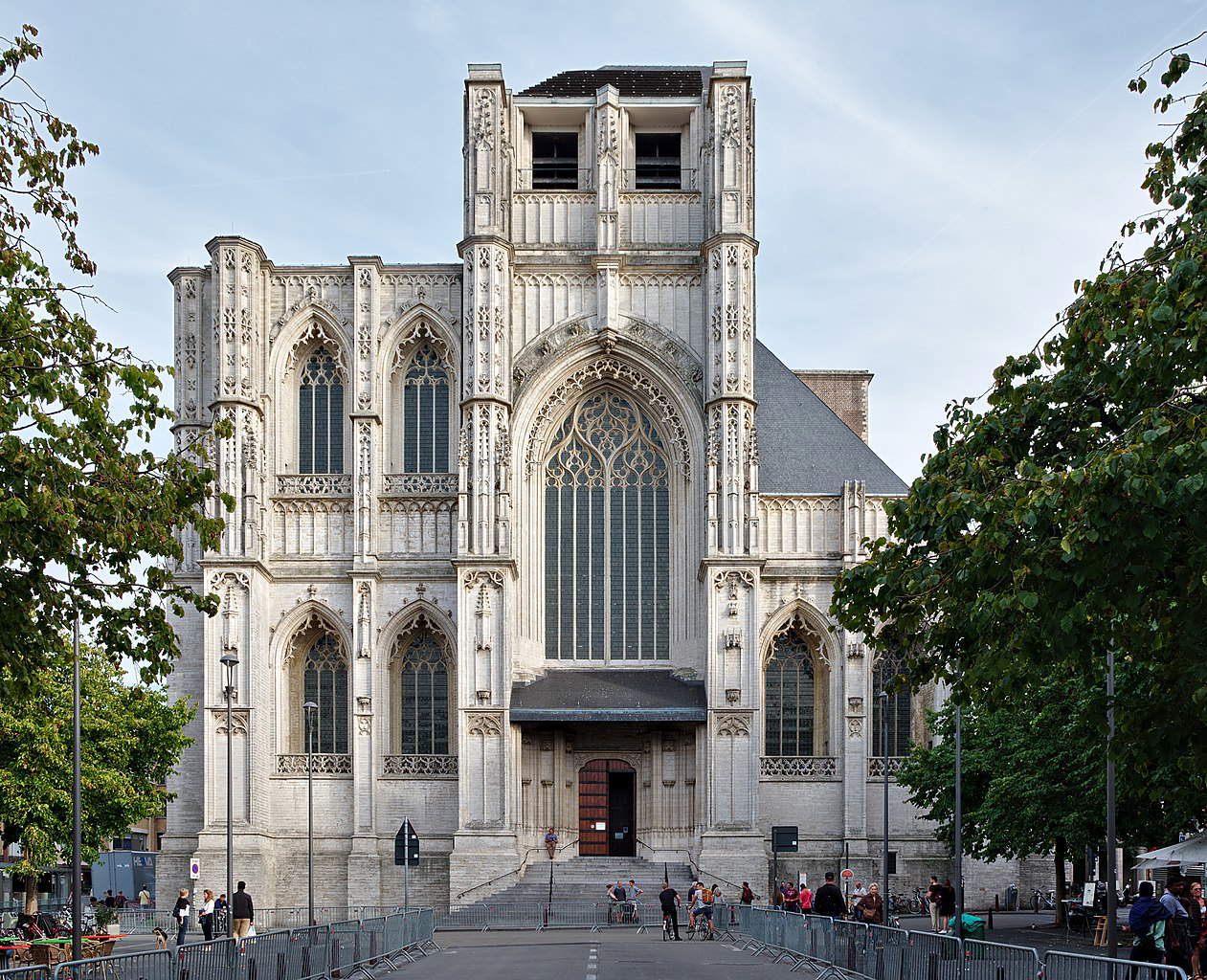 |
| The unfinished facade of St. Peter’s Church in Leuven. Ph. Credit Benoit Brummer |
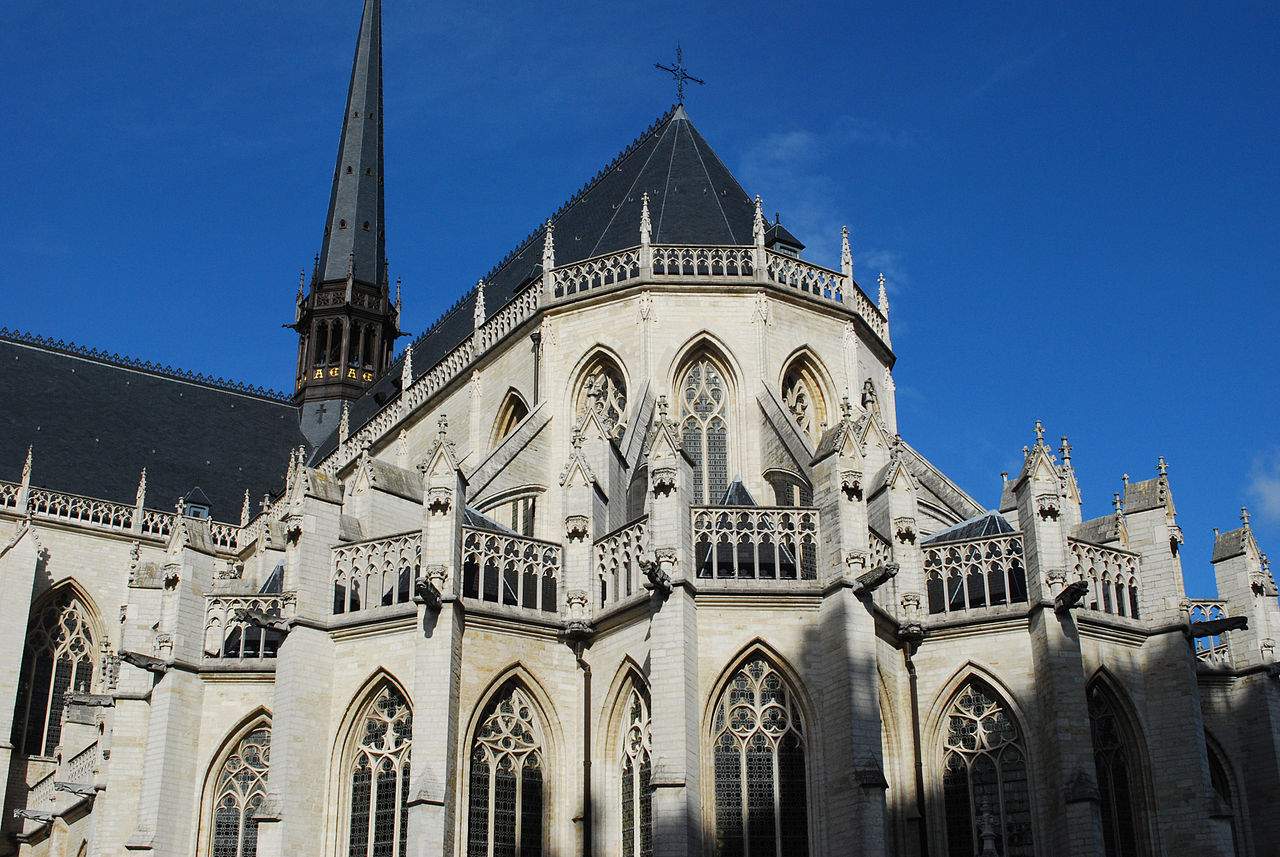 |
| The apse of the church. Ph. Credit Jean Housen |
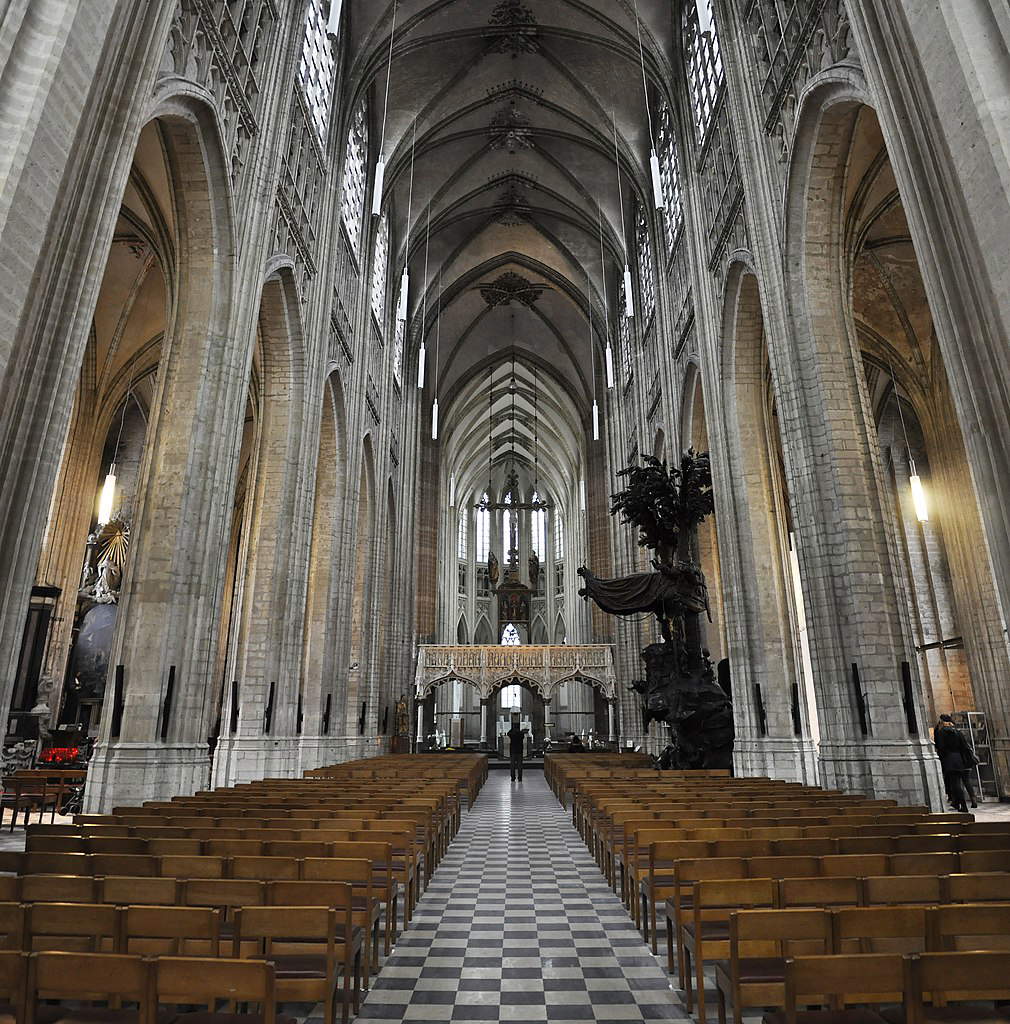 |
| Interior of the church. Ph. Credit Paul Hermans |
1. The model of the tower (1524)
This is a three-dimensional model showing what the facade would have looked like if the work had been completed (although... the model itself is missing one part: it shows in fact only the north tower and part of the central tower, but it gives us a very clear idea). It was built in 1524 in stone (it was commissioned from Joost Metsys himself) and was also restored during 2012-2020. Damaged during World War II, it suffered further damage after the war because a visitor to the church touched it, breaking parts of it. It is a rare object and a valuable testimony to architectural work in the early 16th century.
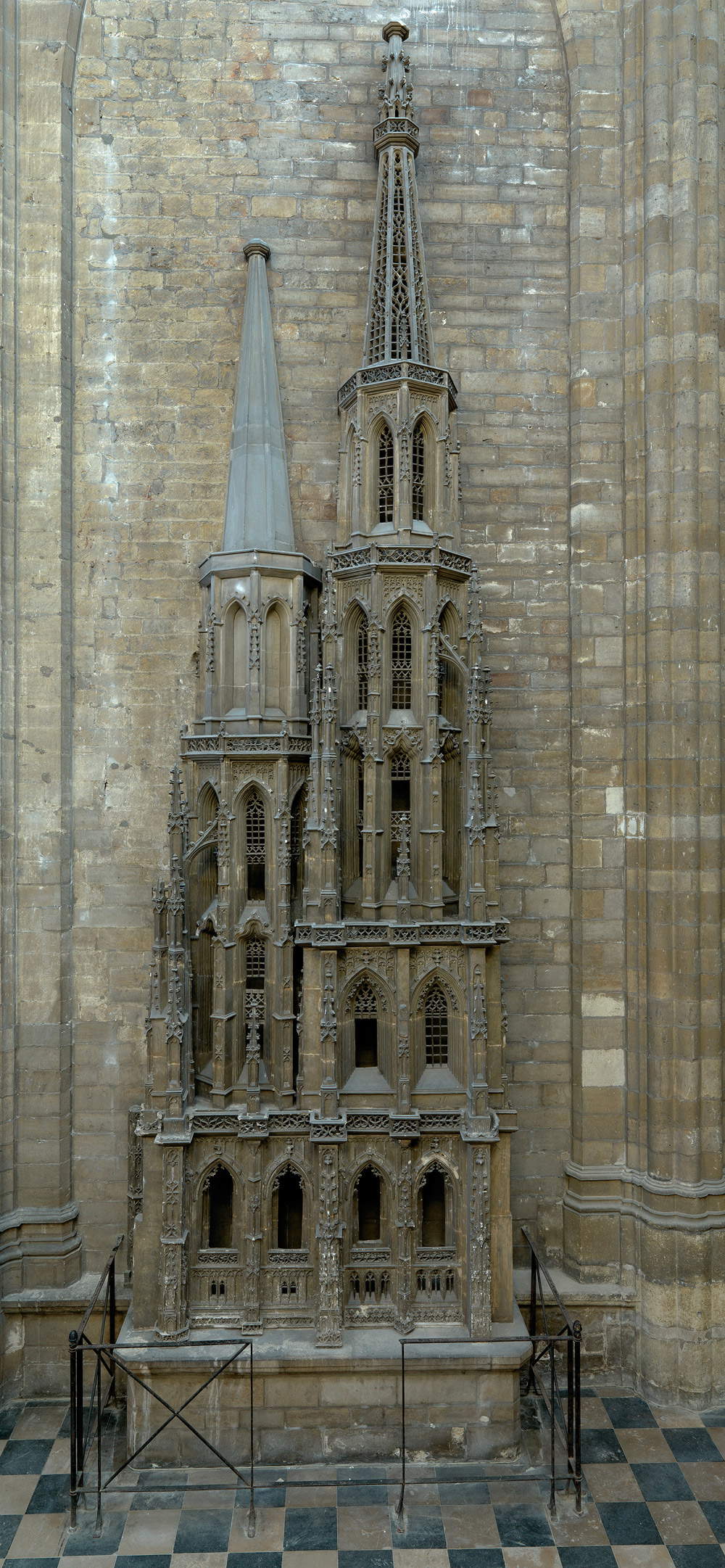 |
| The model of the tower. Ph. Credit Dominique Provost |
2. The funeral monument of Henry I.
This is the tomb of the first Duke of Brabant, Henry I, who was born in Leuven itself and lived between 1165 and 1235. Married when he was only fourteen years old, he became duke of Brabant and Lorraine in 1190, and took part in the Crusades.The excellently preserved stone monument was carved shortly after his death (he died in Cologne, but his body was transported to Leuven for burial here, in the Romanesque church that preceded the present sumptuous building in the Brabant Gothic style). In the work, he has the features of a young man (although Henry I died in his seventies) with thick curly hair, while two angels accompany him. The monument remained in its original location until the nineteenth century, after which it was dismantled to allow for a larger influx of worshippers, and only around mid-century was it moved to St. John’s Chapel.
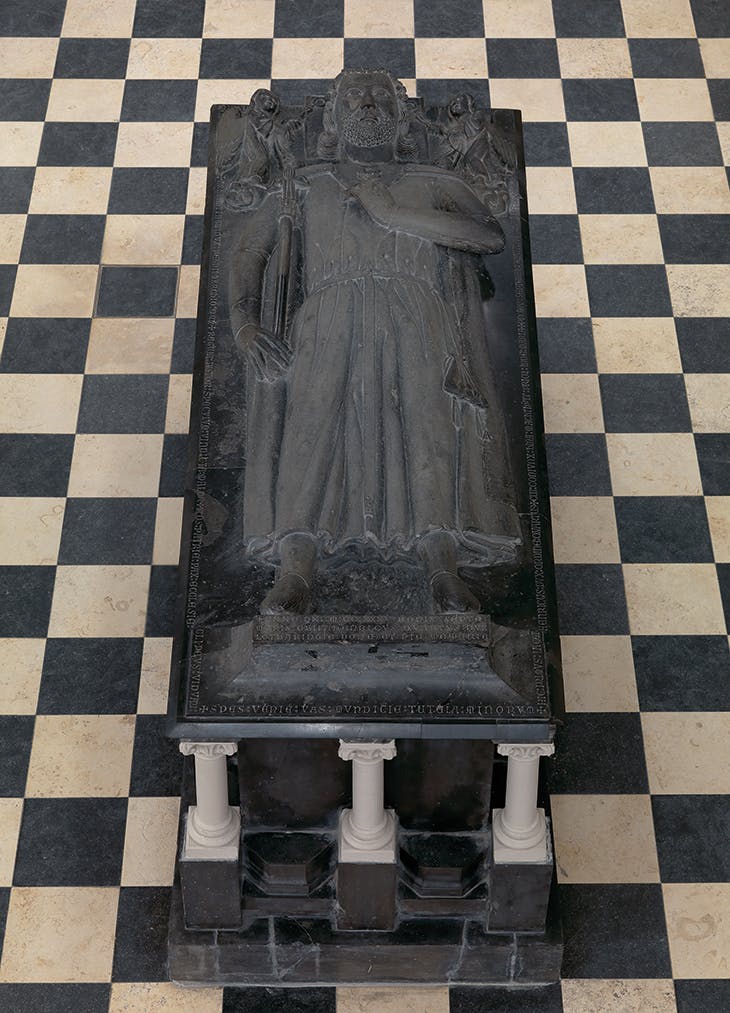 |
| Henry I’s funeral monument |
3. The “Crooked Christ”
This head of Christ, also known as the “Crooked Christ” because of the position the statue was in when it was complete, is the oldest work preserved in St. Peter’s Church in Leuven and is a medieval statue once considered miraculous. A local legend has it that this Christ is crooked in that world because it allegedly caught a thief who had crept into the church: this is why the people of Leuven attributed miraculous powers to it and in ancient times carried it in a procession through the streets of the city on the occasion of inauspicious events. The “Crooked Christ” was not always as we see it: in fact, much of the statue was lost in the fire of 1914, from which only the head survived. And even, a few years later, a restorer kept the original for himself, replacing it with a copy: the Christ returned to the church only in the 1950s.
 |
| The Crooked Christ |
4. The Edelheere triptych.
This is a copy of the famous triptych of the Deposition that Rogier van der Weyden painted in 1435 and which is now in the Prado: it is a valuable work, however, because it dates back to 1443 and is one of the earliest copies that were made from Van der Weyden’s masterpiece (and according to some scholars it is even the oldest copy). It is five times smaller than the original, but it is a very faithful copy made by an artist from Louvain whose name we do not know, but who knew how to produce paintings of great quality. The triptych owes the name by which it is known to its patron, Willem Edelheere, a wealthy city nobleman, who wanted it to decorate the family chapel in the church. The work still stands in its place today.
 |
| Unknown Flemish artist, Edelheere Triptych (1443; oil on panel, 100 x 105 cm the central compartment, 105 x 53 the lateral ones; Leuven, Sint-Pieterskerk) |
5. The works of Jan Rombouts
Not only Van Eyck and Van der Weyden: the Flemish Renaissance is a collection of personalities of the highest caliber, albeit less famous than those of the two highest names. One of these is Jan Rombouts, who lived in Leuven between 1480 and 1535 (so he belongs to at least two generations after that of the two artists just mentioned): two of his works, the Martyrdom of St. Catherine and the Martyrdom of St. Clement, can be seen in the church.
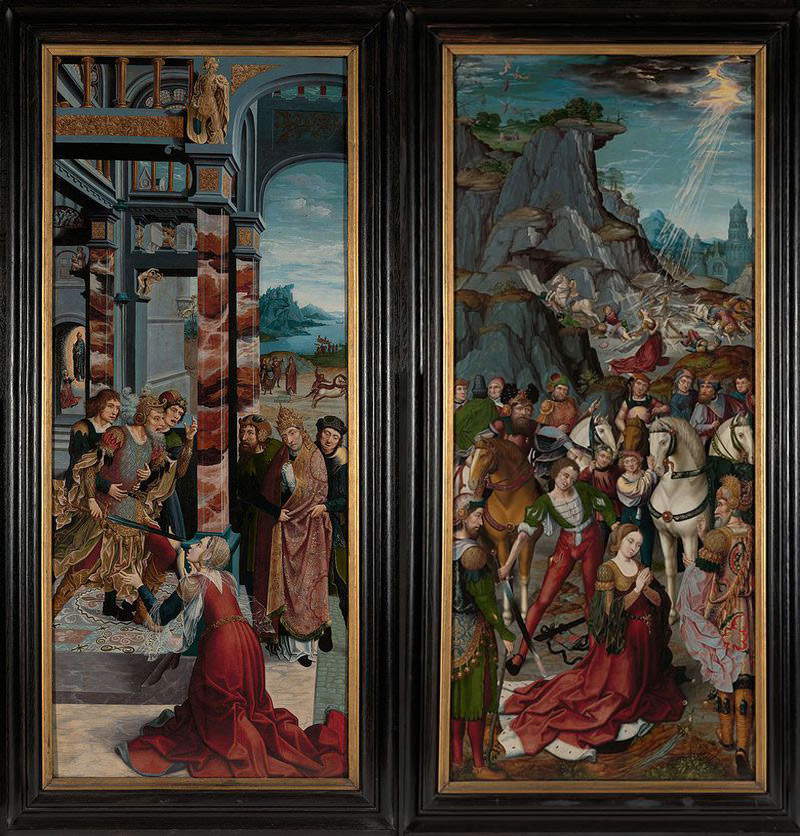 |
| The Martyrdom of St.Clement and The Martyrdom of St. Catherine by Jan Rombouts |
6. The Chapel of Margaret the Fair
Margaret the Fair (Fiere Margriet) is a heroine of the city: she was an 18-year-old girl who, in 1225, was murdered just outside Leuven. She worked in the tavern of her aunt and uncle, who one evening sent her to buy wine while two wayfarers were arriving in the tavern: when she returned, she found her aunt and uncle killed and robbed by the wayfarers, who in turn kidnapped Margriet and also attempted to rape her. Since the young woman resisted, the two criminals killed her as well, throwing her body into the Dyle River. By a miracle, her body followed the course of the river until it reached the city, directly under the eyes of Duke Henry I, who managed to find the perpetrators and punish them. Because of this fact, the people of Louvain attributed miraculous powers to her: in 1535 a chapel was erected in her honor in the church, where today there is a neo-Gothic reliquary containing her remains. Margaret was beatified by the Church in 1902 (the same year as the reliquary). The chapel also houses five paintings recounting her legend that were made in 1760 by Jozef Verhaghen, a local artist who became court painter in Vienna in 1773.
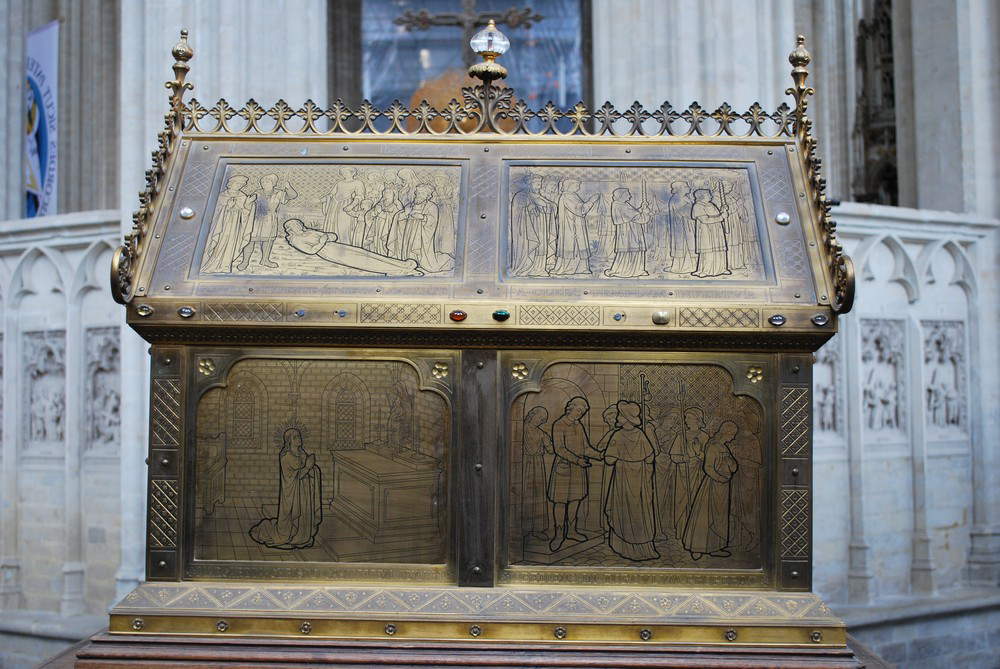 |
| The reliquary of Margaret the Fair |
7. TheLast Supper by Dieric Bouts
This is one of the two masterpieces by Dieric Bouts, a great master of the Flemish Renaissance (he lived between 1410 and 1475), found in the church, as well as one of his major masterpieces. TheLast Supper was painted in 1464 for St. Peter’s Church itself: it is a revolutionary work for Flanders, since no one before him in these parts had managed to achieve such a degree of perspective illusionism. The work is also an important landscape essay: the scenes we find on the sides make him one of the first landscape painters. But these are not the only reasons for the painting’s interest: in fact, the work also contains a piece of 15th-century Louvain (in fact, it is possible to see one of the towers of the Town Hall within the painting as it appeared at the time).
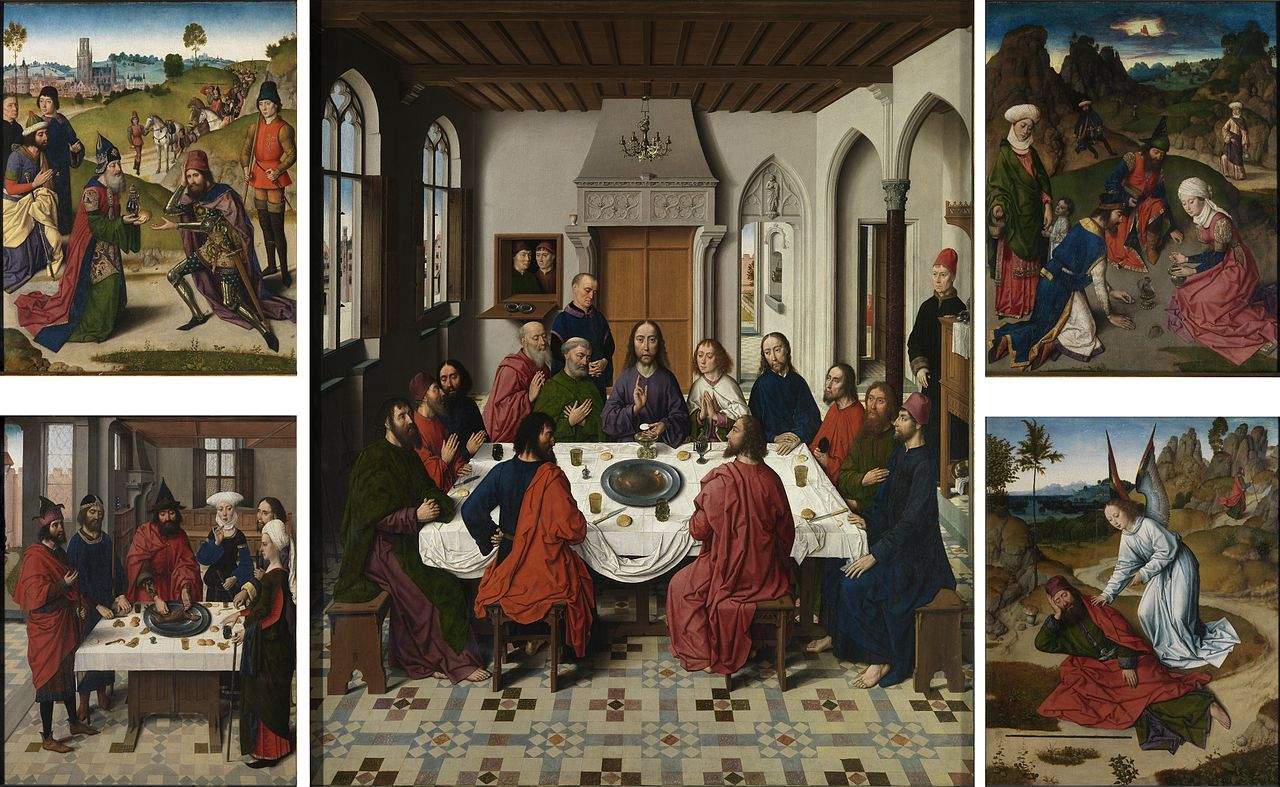 |
| Dieric Bouts, Last Supper (1464-1468; oil on panel, 88 x 71 cm; Leuven, St. Peter’s Church) |
8. The Martyrdom of Saint Erasmus by Dieric Bouts.
The second of the two paintings by Dieric Bouts found in St. Peter’s Church, it too is still situated in its original location. It was commissioned from the artist probably around 1460 (although it was finished eight years later, as the inscription on the central panel attests: the artist signs himself “Theodoricus Bouts” and dates the work 1468) and presents us with the martyrdom scene of St. Erasmus in the center and, in the side compartments, seamlessly with the scene narrated in the center, St. Jerome and St. Bernard of Clairvaux. The three allegorically represent three ways of attaining saintly status: study, martyrdom, and asceticism.
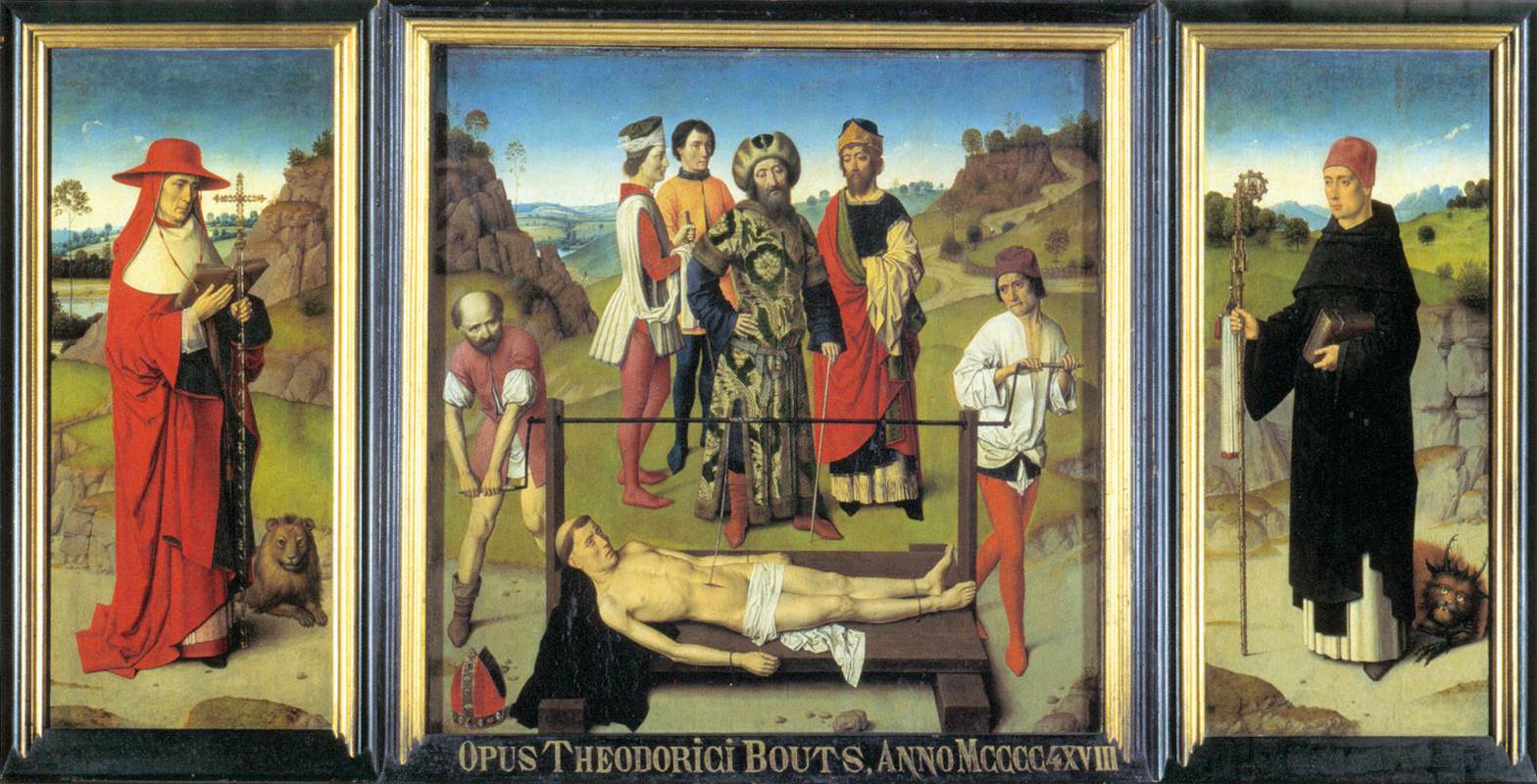 |
| Dieric Bouts, Triptych of St. Erasmus (1468; oil on panel, 34 x 148 cm; Leuven, St. Peter’s Church) |
9. The Tower of the Sacrament
The twelve-meter-high Tower of the Sacrament is the oldest tower of its kind found anywhere in Belgium. It dates from around 1450 and was completely cleaned and restored in 2018. It is attributed to the architect Matheus de Layens, one of the masters of Brabant Gothic, who lived in the mid-15th century. It is an extraordinary artifact, halfway between sculpture and architecture, rising the full height of one of the nave’s large pointed arches. Works of this kind are also found in other churches in the area and are nothing more than imposing tabernacles, or objects that served to enclose the consecrated host (the “sacrament,” in fact).
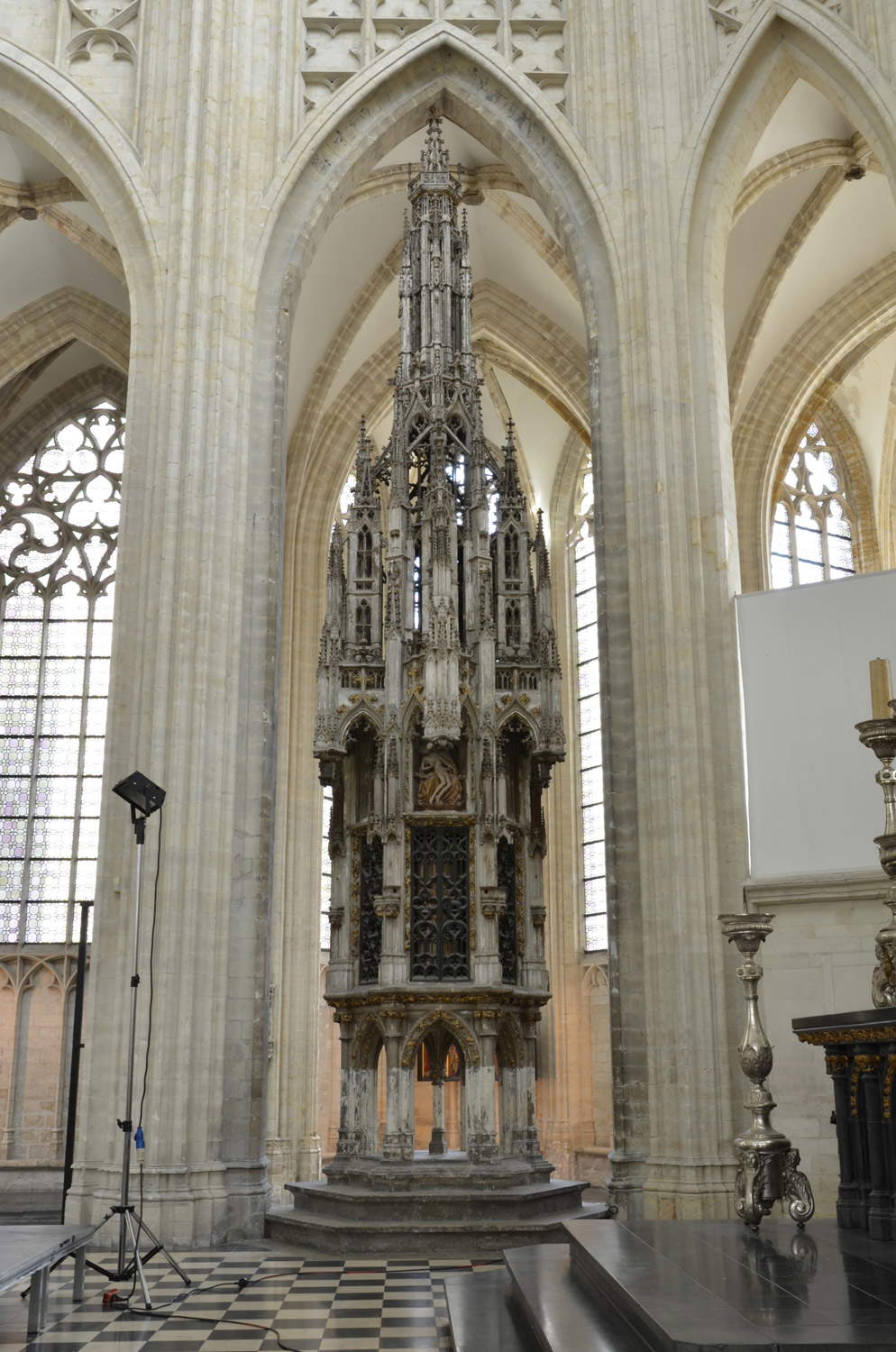 |
| The Tower of the Sacrament. Ph. Credit Paul Vanden Bossche |
10. The Triumphal Cross
It hangs above the high altar and is attributed to one of the greatest sculptors of the late Flemish Renaissance, Jan Borman, whose workshop was known to be the most important for the production of woodwork in Brabant (and to the Borman family, as well as to the workshop, the M Leuven museum in Leuven has dedicated a major exhibition in 2019).
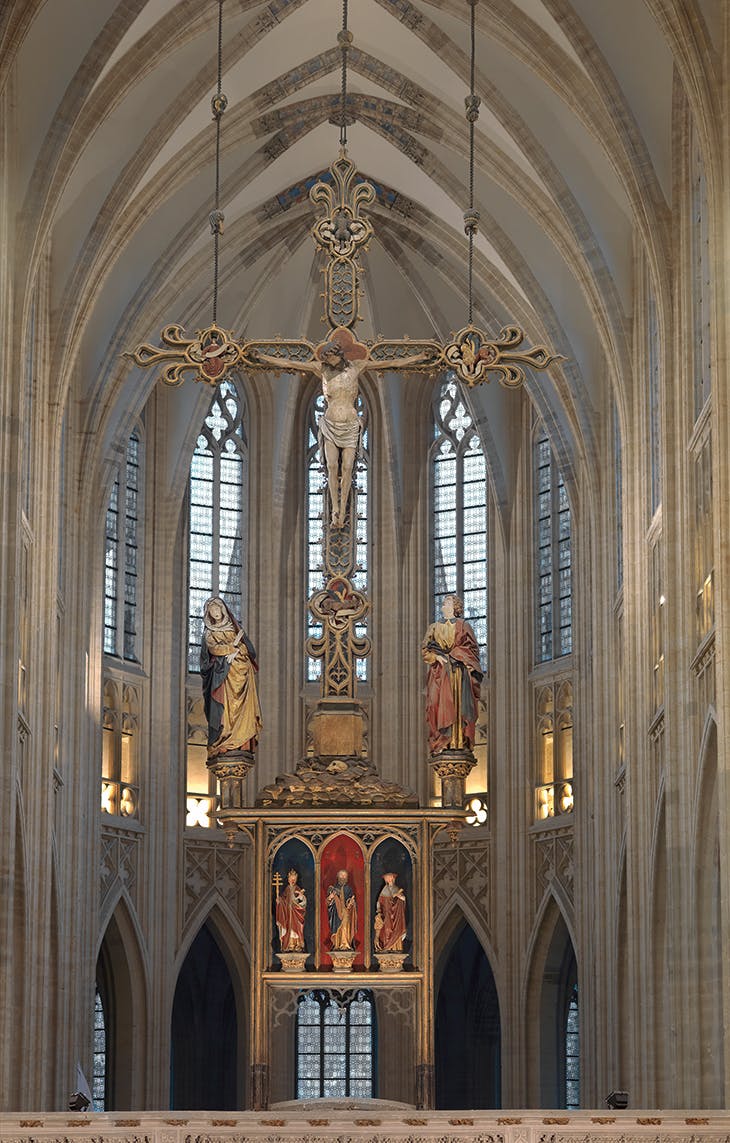 |
| The Triumphal Cross |
11. The Madonna Sedes Sapientiae
That of the Madonna Sedes Sapientiae (i.e., “seat of wisdom,” an allegory of Jesus) is one of the most popular Marian iconographies in the Middle Ages and involves the depiction of the Madonna seated with the infant Jesus on her lap. The Sedes Sapientiae of the Sint-Pieterskerk in Leuven dates back to 1442, is the work of sculptor Nicolaas de Bruyne, and in ancient times was also carried in procession. The work is still the symbol of the Katholieke Universiteit Leuven, the Catholic University of Leuven, founded in 1425 (and now consistently among the top 100 in the world): the work by De Bruyne stands in the center of the university’s coat of arms.
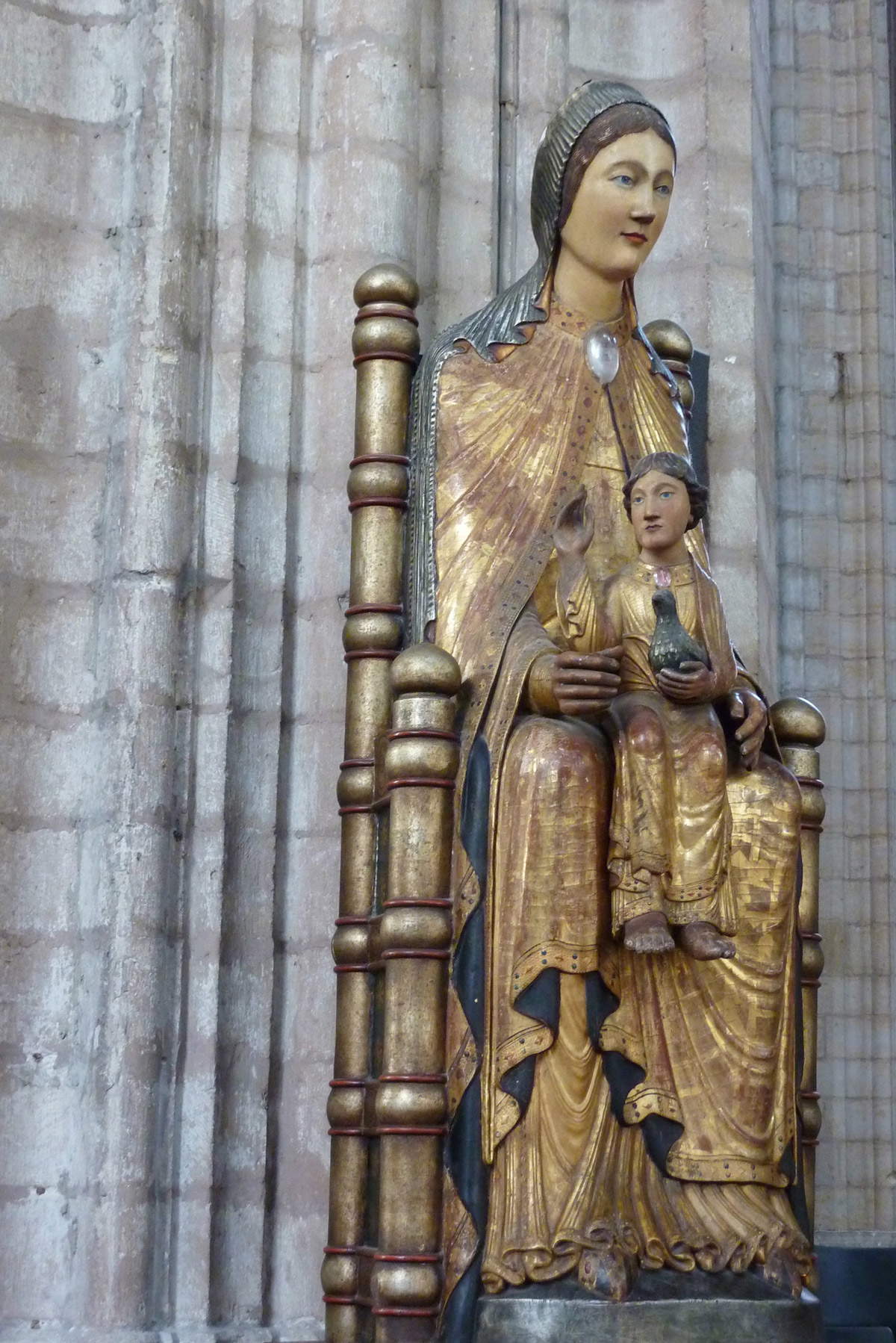 |
| Our Lady Sedes Sapientiae |
12. The Brewers’ Guild Chapel.
Leuven is known around the world as an internationally renowned brewing center (and already Belgium is home to many of the world’s best beers). The production of the alcoholic beverage began in the city in the 15th century, and since that time, the brewers of Leuven have banded together in a guild (i.e., a guild) and wanted to endow themselves with a chapel in the city’s most important church. Throughout the centuries, the brewers continued to enrich the chapel with valuable works of art: among them, the altar with the Baroque gate by Hendrik Danco (also the author of Rubens’s tomb in St. James’s Church in Antwerp).
 |
| St. Peter's Church in Leuven, a jewel of Brabant Gothic. In 12 stages |
Warning: the translation into English of the original Italian article was created using automatic tools. We undertake to review all articles, but we do not guarantee the total absence of inaccuracies in the translation due to the program. You can find the original by clicking on the ITA button. If you find any mistake,please contact us.


























